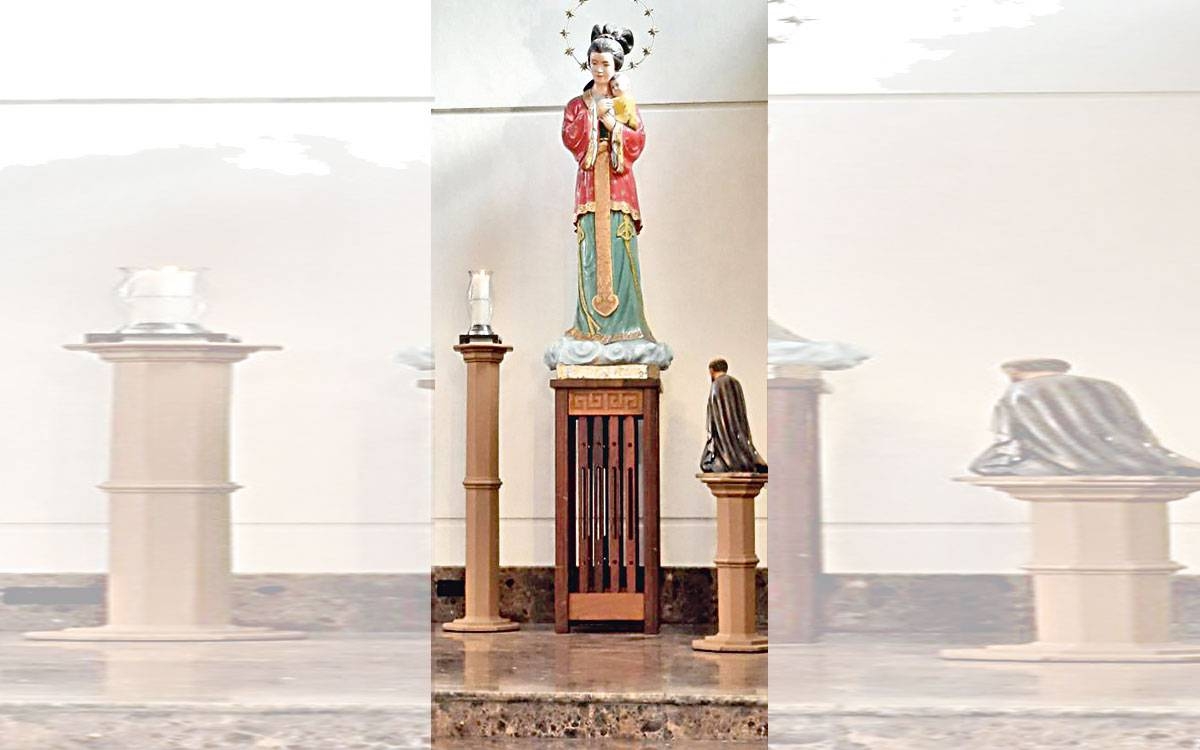THE Santa Maria Parish Church in Iloilo City, dedicated to Our Lady of China, is likely to be on the list of churches that the faithful, especially Chinese Filipinos, will have for their Visita Iglesia.
Located on Gen. Blanco Street, Maria Clara, in Iloilo City, the Santa Maria Parish is home to Chinese Filipino Catholics in the Archdiocese of Jaro.
According to the parish, the church was established in 1957 by Jesuit missionaries expelled from China with the rise of atheism on the Chinese mainland, including Fr. Miguel Pardenas, a Mexican.

Pardenas was pastor of the newly created parish in Cebu City when he came to Iloilo City in 1953 for an Ignatian retreat.
The Mother Superior, herself Mexican, had told him there was also a need to minister to the big Chinese and Chinese Filipino population in Iloilo, the parish said.
The idea to create a personal parish for the community got strong support from the then-Jaro archbishop, Msgr. Jose Ma. Cuenco.
In that same year, the Jesuit China mission superior, Fr. Paul O’Brien, gave that task to Italian missionary Fr. Guerrino Marsecano, who was 39 years old at that time.
Marsecano was expelled from Mengiuang, China, in December 1952 after four years of hard work in communal farms, the parish said.
He studied the work of Pardenas in Cebu before going to Iloilo, where he had only P30 in his pocket and nothing arranged in advance for his accommodations.
Marsecano arrived on March 1, 1953, to a warm welcome from the leaders of the Iloilo Catholic Chinese Association (ICCA) and a sizable crowd of Chinese Filipino Catholics, the parish said.
On July 5, 1953, during the holy Mass in Assumption Chapel, Cuenco read the decree from Pope Pius 12 authorizing the creation of a personal parish for Chinese and Chinese Filipino Catholics in Iloilo City.
Marsecano became the first priest of the parish dedicated to the apparition of the Blessed Virgin Mary that first appeared in Donglu, China, in the 1900s.
Marsecano held Masses and other church activities at the Assumption Chapel. After a year of services in various churches, Marsecano and the community realized the need for the Santa Maria Parish to have its own church.
When Msgr. Juan Velasco, a Dominican bishop of Amoy and national director of the Chinese mission in the Philippines, came for a pastoral visit in November 1956; he discussed with the parish board and ICCA the need for a bigger and more permanent church, which would cost an estimated P80,000 at that time.
Marsenaco oversaw the initial preparations for a new church, cut short when he was transferred to Formosa, present-day Taiwan, to work among the French Canadian Jesuits in the Kuangshi district in 1956.
A French Jesuit missionary, Fr. Andre Joliet, who was pulled out of the Chinese apostolate in East Malaya, took his place, the parish said.
Work immediately started with the money left over from Marsecano’s tenure and a donation of P25,000 from Swiss Catholics.
Santa Maria Parish celebrated its first Mass in the new church on Dec. 25, 1957.
The Santa Maria Parish Church was blessed by Msgr. Teofilo Camomot, D.D., auxiliary bishop of Jaro, on April 27, 1958. The Chinese Filipino community in Iloilo finally had a church to call its own.
The parish said Benjamin Hilado, dean of the College of Architecture of the University of San Agustin, designed the building.
Francisco Ricardo Monti, the University of Santo Tomas’ dean of the College of Fine Arts, sculpted the bas-relief of Our Lady of China that dominates the facade of the church, basing his work on Chinese artist John Lu Hungnien’s drawing.
On the wall of the altar in the sanctuary is a cross inspired by the miraculous crucifix of Limpias in the Church of St. Peter in Santander, Spain.
Its Chinese inscription in stained glass is the work of sinologist Fr. John Wang Chang Chi.
It reads: “Offering-Sacrifice” (above the cross beam); “The world has been saved by the instrument of torture” (under the cross beam, right side); and “To feed your soul, you must have spiritual food” (under the cross beam, left side).
The statues of the Sacred Heart and the Holy Family are also from Spain. The bell was made by the makers of the American Liberty Bell.
*****
Credit belongs to : www.manilatimes.net
 Atin Ito First Filipino Community Newspaper in Ontario
Atin Ito First Filipino Community Newspaper in Ontario






